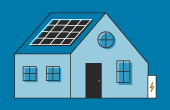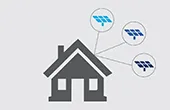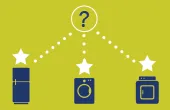If you’re considering purchasing a Tesla, one of the top things on your mind is probably how much you’ll pay to charge it. You’re likely familiar with how much it costs to fill up a tank of gas, but charging an electric vehicle (EV) battery is a whole new ballgame! In this article, we’ll explain how much you should expect to pay to charge your Tesla and how this compares to comparable internal combustion engine (ICE) – AKA gas-powered – vehicles. We’ll also walk you through some of the major factors that will impact the cost of charging your Tesla. (Spoiler alert: the best way to lower the cost is to go solar!)
Continue readingWhat are solar shingles?
You don’t have to install solar panels on your roof to go solar – solar roof tiles are an innovative solar technology that can also help property owners save on their energy bills just like traditional solar panels. In this article, we’ll review the key differences between solar shingles, also called photovoltaic shingles, and their solar panel counterparts, as well as weigh the pros and cons of a solar shingle installation.
Continue readingWhat are some renewable resources? Examples of alternative energy
The era of renewable resources and alternative energy has arrived. It’s cheaper now than ever before to generate electricity from renewable resources, catapulting them from fringe options to the fastest-growing energy resources in the country. These renewable resources include alcohol, water, methane gas, natural oils, and thermal generation. In 2017, renewables set a record in the U.S. by generating 15% of all electricity, predominantly due to hydropower, solar and wind. What are some other examples of renewable energy? We’ll go down the list.
Continue readingSolar news: October 29th, 2021
In this week’s news round-up, we discuss Google’s recent installation of solar shingles at its Silicon valley campus, and a recent update in electric vehicle availability.
Continue readingHow your behind-the-meter solar system can lower electricity bills for your whole neighborhood
It’s well known that the behind-the-meter (BTM) solar on your rooftop can reduce the demand for grid-scale electricity: every megawatt-hour (MWh) produced from BTM solar is one fewer MWh that needs to come from the grid (often from a dirty coal or natural gas power plant). Lesser known, however, is the “price effect” of BTM solar. When BTM solar lowers the amount of electricity that expensive power plants need to produce, it also reduces the price that all utilities pay for that electricity. This means that BTM solar can both avoid the creation of dirty electricity, and lower the price that everyone in a region ultimately pays for electricity. As a result, when you install BTM solar, it benefits you and your neighbors.
Continue readingHow can the clean energy industry support low-income households in going solar?
Although there is growing interest in policies and programs to ensure that the benefits of solar power are equitably reaching households of all income levels, lower income households are still less likely to go solar.
Some of the causes for this are well-documented and unsurprising. Income is unequally distributed among households, low and moderate income (LMI) households have less cash, are less able to finance installations, are less likely to own their home, and are less aware of the opportunity.
Continue readingThe white gold rush for green lithium: can lithium production be done responsibly?
Lithium has been hailed as ‘white gold’ for its versatility and value in today’s world. But what exactly is it? Well, lithium powers technology spanning from the computer you’re reading this on to lifesaving pacemakers. Basically, any portable electronic device contains lithium. Lightweight, powerful, and rechargeable, this metal’s value also lies in its role as an essential piece in the clean energy revolution. Lithium batteries’ high energy density and ability to be recharged make them uniquely suited to power the electric vehicles (EVs) and electric grids of the future. However, despite the metal’s importance in the clean energy revolution, it’s incredibly resource-intensive to extract and this process causes environmental distress, leading many to wonder: can we produce lithium responsibly?
Continue readingHow many solar batteries do I need?
Solar batteries are becoming more and more common for individual homeowners, and just like solar panels, the exact battery installation you should get depends on your unique situation and what you want to get out of energy storage. The question “how many solar batteries do I need?” doesn’t have a straightforward answer – in this article, we’ll outline the major factors that contribute to the size of a battery system, and around how large your solar battery setup should be.
Continue readingWhat you need to know about electric vehicle chargers
Electric vehicles are increasing in popularity. In fact, the odds are good that the next car you purchase will be partially or fully electric. (I know mine will be!) With that transition from an internal combustion engine vehicle to an electric vehicle (EV) comes one major difference: how you fill the “tank”.
While driving to a gas station to refuel is second nature to anyone with a car, plugging into an electric vehicle charger is likely a new experience that comes with a series of questions. Here’s what you need to know about EV chargers.
Continue readingWe read Q CELLS’ warranty so you don’t have to
Let’s face it – warranties aren’t the easiest (or most gripping) documents to read. There are often a lot of details and fine print included that can be hard to digest, leaving many to wonder: what does the warranty actually cover? Am I vulnerable? Anything I might be missing?
To make it as easy as possible, we’ve read warranty documents for the top solar equipment manufacturers–and talked to them to confirm what is and isn’t included–and plan to point out the most important aspects of each in a series of articles. In this article, we’ll explain the warranty of one of the largest solar panel manufacturers in the world: Q CELLS.
Continue reading




